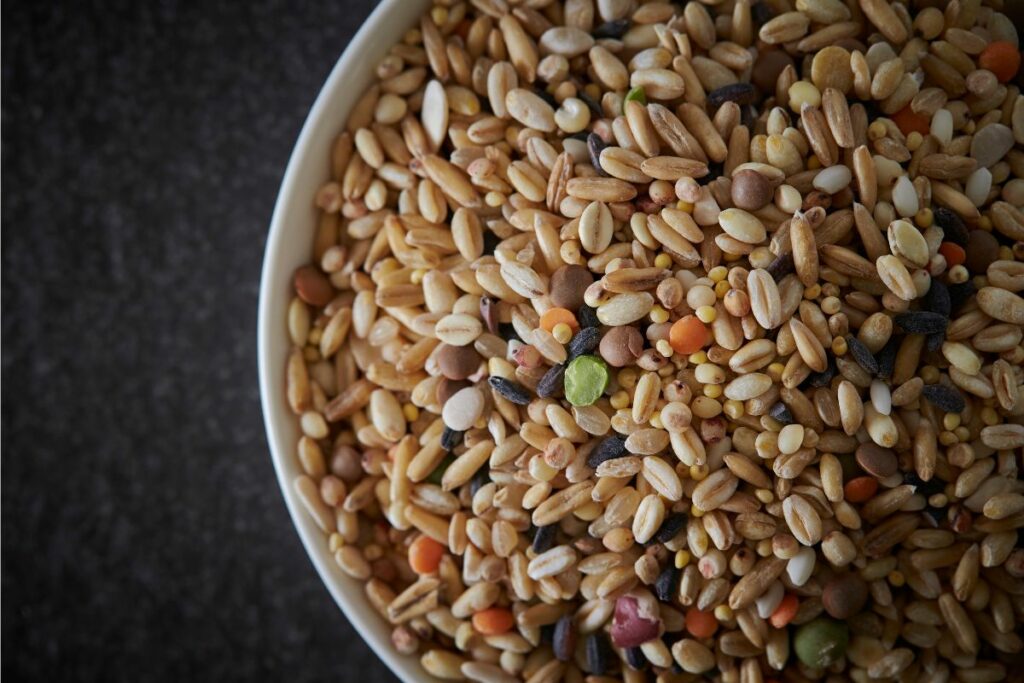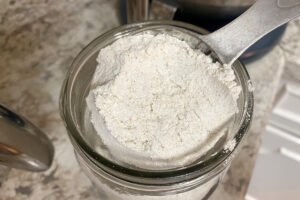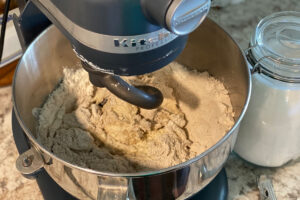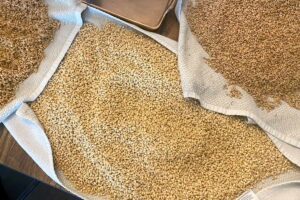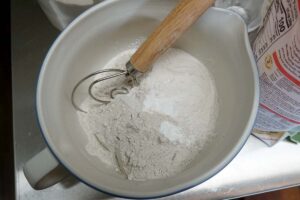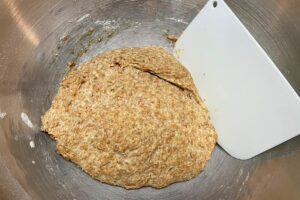The term “multigrain” is something I see all over packaging at my local H-E-B, Walmart, and Aldi. From tortillas to bread to convenience foods, I would assume that if something is “multigrain,” it must be better for me and my family. Unfortunately, I can accept it as something that is beneficial without knowing what it actually means.
But what exactly is multigrain? Is it a good thing to buy multigrain foods? How does it benefit the human body?
The term “multigrain” means a food product that includes multiple kinds of grain, but this term is not highly regulated by the FDA or USDA. Most companies use the term “multigrain” to indicate that they use combinations of grain, such as barley, wheat, millet, flax, and oats, but they are almost always NOT whole grain. The term “whole grain” is regulated and therefore companies can use “multigrain” to give the illusion of healthier food while still staying within government regulations.
Because of this, the term “multigrain” can be difficult to pin down, and often requires a little extra care from the consumer if they want to figure out what it means.
Different grains offer different things to your body, so if you’re watching your diet and general nutritional intake you’re going to want to make sure you know what you’re consuming.
How the term “multigrain” is regulated
In the United States, the regulation of food labeling for truthfulness and accuracy is primarily handled by two federal agencies:
- Food and Drug Administration (FDA): The FDA regulates most food products, including dietary supplements, bottled water, food additives, infant formulas, and other food products (except for aspects of some meat, poultry, and egg products, which are regulated by the USDA). The FDA is responsible for ensuring that the labels on these products are truthful and not misleading, and it sets regulations for labeling requirements such as nutrition facts, ingredient lists, and health claims.
- U.S. Department of Agriculture (USDA): The USDA, through its Food Safety and Inspection Service (FSIS), is responsible for regulating the labeling of traditional meats, poultry, and certain egg products. This includes ensuring accurate ingredient labeling, proper handling instructions, and the enforcement of regulations that prevent false or misleading labeling.
Both agencies are responsible for ensuring people receive accurate information about the food products they purchase, enabling them to make informed choices. This includes overseeing claims made on packaging, ensuring that nutrition information is presented correctly, and verifying that ingredients are listed appropriately.
Is “multigrain” regulated?
The term “multigrain” itself is not directly regulated by the FDA or USDA in terms of specific criteria that a product must meet to use this label. However, there are general regulations that apply to food labeling which would impact how a term like “multigrain” can be used.
These regulations require that food labels must be truthful and not misleading. So, a product labeled as “multigrain” must contain more than one type of grain. But, the term doesn’t indicate anything about the proportion of these grains, whether they are whole grains, or about the nutritional value of the product. Unlike terms such as “whole grain” or “organic,” which have specific definitions and standards set by the FDA and USDA, “multigrain” is more general and less strictly defined.
Why does this matter?
Honest food labeling, especially in the context of terms like “multigrain,” is important for anyone who regularly buys food from conventional stores (which is almost everyone!).
Now knowing that some words are given strict requirements (like “whole grain”) and some are not (like “multigrain”), we can better evaluate ingredients.
But, why is it important for us to know how words are regulated?
- Nutritional choices: Many consumers choose “multigrain” products believing they are healthier options, often associating them with whole grains. However, not all multigrain products are made with whole grains; they may be made with refined grains instead. Honest labeling helps consumers understand what they are actually consuming and make choices in line with their nutritional needs or preferences
- Dietary needs and restrictions: For those with specific dietary needs, such as a high-fiber diet or restrictions like gluten intolerance, understanding the exact grain content is important. “Multigrain” might imply a variety of grains, some of which could be problematic for individuals with allergies or sensitivities
- Transparency and trust: Consumers rely on labeling to make informed choices about their food. Misleading labels can erode trust in brands and the food industry as a whole. Clear and honest labeling is key to maintaining consumer trust and confidence
- Health claims and misconceptions: Labels like “multigrain” can sometimes carry a health halo, misleading consumers to think a product is healthier than it actually is. Accurate labeling helps in dispelling such misconceptions and enables consumers to make choices based on factual nutritional information
Multigrain foods can be a healthy choice, especially when they are made from whole grains and fit into a balanced diet. However, it’s important to read labels carefully to ensure that the product meets your nutritional needs and health goals.
Is it a good thing to buy multigrain foods?
Buying multigrain foods can be beneficial, but whether it’s a “good thing” depends on your specific dietary needs, health goals, and the actual nutritional content of the specific multigrain product.
As you are putting together your curbside pickup order or standing in the grocery isle, here are some things to look out for:
- Diversity of grains: Multigrain products contain more than one type of grain, which can offer a broader range of nutrients compared to products made with a single type of grain. Different grains bring different vitamins, minerals, and fibers so look to know what the mix is. The more familiar you are with grains (ahem, you’re on CommonGrains.com so we can help you with that!) the easier this will be
- Whole vs. refined grains: This is the biggest area of deception I see … Because it’s important to distinguish between whole grains and refined grains. Whole grains include all parts of the grain, offering more fiber, protein, and nutrients. Most products labeled “multigrain” are using multiple refined grains, not whole grains. They would likely label it “whole grain” instead of “multigrain” … so “multigrain” is an indication that the product is not whole grain
- Nutritional balance: Even if a product is multigrain, it’s essential to look at the overall nutritional balance. Some multigrain products may still be high in added sugars, sodium, or unhealthy fats
- Dietary needs and goals: If your dietary goal is to increase fiber intake or improve the quality of carbohydrates in your diet, multigrain products are likely not going to meet your needs. They are most-likely going to be made of refined grains
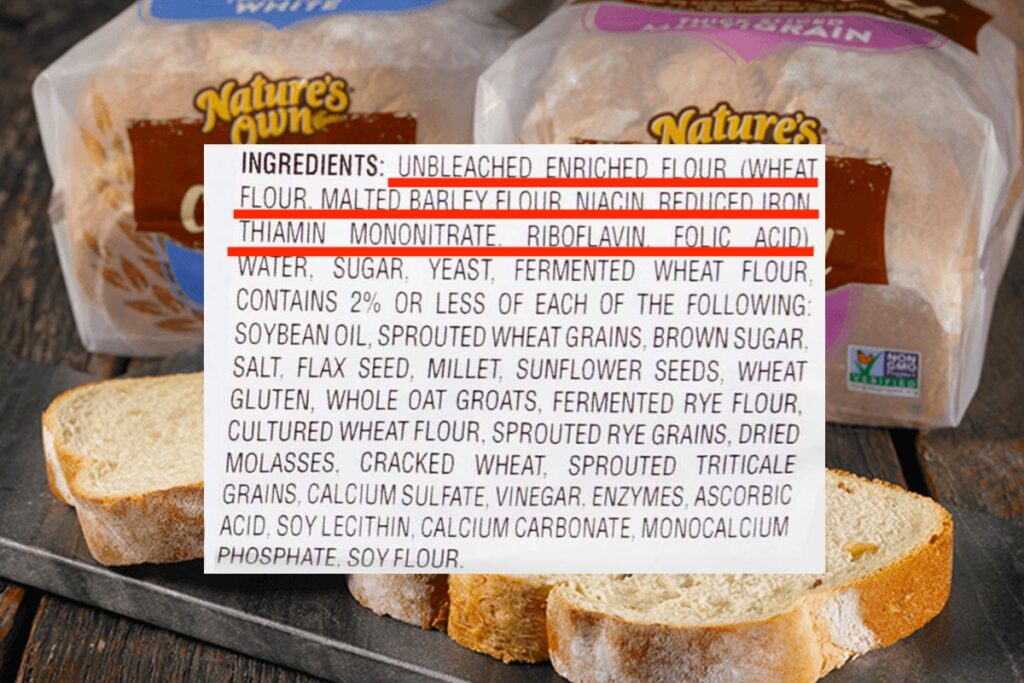
The term “multigrain” simply indicates that a product contains more than one type of grain. However, it doesn’t specify whether these grains are whole or refined, which is a crucial distinction in terms of nutritional value.
So, is it a good thing to buy “multigrain”-labeled foods? I would say that most of the time, you are getting a mix of refined grains, not whole grains. A company paying extra to put whole grains in their food is going to opt for the “whole grain” labeling, which is much more tightly regulated by the FDA/USDA. If they choose “multigrain” it’s usually just a marketing ploy.
Whole grain v. multigrain
Understanding the differences between “whole grain” and “multigrain” labels is important.
- Whole grain
- Definition: A “whole grain” label indicates that all parts of the grain kernel – the bran, germ, and endosperm – are used in the product. This is regulated and required by the FDA/USDA
- Nutritional content: Whole grain foods are richer in fiber, protein, vitamins (like B vitamins), minerals (like iron, magnesium), and other beneficial compounds compared to their refined counterparts
- Health benefits: Consuming whole grains is linked to various health benefits, including lower risk of heart disease, stroke, type 2 diabetes, obesity, and some forms of cancer. The fiber in whole grains also aids in digestion and can help with weight management
- Labeling: To identify whole grain products, look for terms like “100% whole grain” or “whole wheat.” The Whole Grain Council’s stamp, if present, can also be a helpful guide
- Multigrain
- Definition: “Multigrain” means that a product contains more than one type of grain. These can be any combination of grains, and they can be either whole or refined. This should be looked at more of a marketing term and not an indication of how “healthy” the grains are
- Nutritional content: The nutritional value of multigrain products varies widely depending on the types and proportions of the grains used and whether these grains are whole or refined
- Health benefits: The benefits of multigrain products depend on the grains used. If the product is made with whole grains, it can offer similar benefits to whole grain products. However, if it’s made with refined grains, these benefits are significantly reduced
- Labeling: A product labeled as “multigrain” may sound healthy, but it’s important to read the ingredients list. Look for specific grains listed as “whole” (e.g., whole wheat, whole oats) to ensure you’re getting the benefits of whole grains. It must have BOTH “whole grain” and “multigrain” to get the full health benefits
Key differences:
- Composition: Whole grain products must use the entire grain kernel, while multigrain products can include any combination of different grains.
- Health Implications: Whole grain products consistently offer more health benefits due to their complete nutritional profile, whereas the benefits of multigrain products depend on the type and form of the grains used.
- Label Clarity: “Whole grain” is more straightforward in conveying the health benefits, while “multigrain” requires more careful label reading to determine the product’s nutritional value.
While both whole grain and multigrain products can be part of a healthy diet, whole grain products generally offer more consistent health benefits. Always read labels carefully to understand what you are consuming, especially with multigrain products.
Frequently asked questions
What is the difference between whole grain and multigrain?
Whole grain products are made using all parts of the grain kernel – the bran, germ, and endosperm, which means they retain more fiber, vitamins, and minerals. Multigrain products, on the other hand, contain more than one type of grain, but these grains can be either whole or refined. The key difference lies in the nutritional content: whole grain products are consistently higher in nutrients and health benefits, while the benefits of multigrain products depend on the specific grains used and whether they are whole or refined.
How can I identify whole grain products in the grocery store?
To identify whole grain products, look for labels that say “100% whole grain” or check the ingredients list for words like “whole wheat” or “whole [name of grain]” as one of the first ingredients. The Whole Grain Council’s stamp, if present, is also a good indicator. Be wary of terms like “made with whole grains” as they may also contain significant amounts of refined grains.
Are multigrain products healthier than single grain products?
Not necessarily and more often than not, they are less healthy. While multigrain products contain a variety of grains, they are not inherently healthier if those grains are refined. A single grain product made with 100% whole grains can be healthier than a multigrain product made with refined grains. The key is to check whether the grains are whole or refined.
Can multigrain products include refined grains?
Yes, multigrain products can include refined grains. The term “multigrain” only indicates the presence of more than one type of grain and does not specify if they are whole or refined. It’s important to read the ingredients list to determine the type of grains used.
Do whole grain products taste different from refined or multigrain products?
Whole grain products often have a nuttier, richer flavor and a heartier texture compared to refined grain products. Multigrain products’ taste and texture can vary widely based on the combination of grains used. Some people may need time to adjust to the taste and texture of whole grain products if they are accustomed to refined grains.
Are whole grains more expensive than multigrain or refined brain products?
Whole grain products can sometimes be more expensive than refined grain products, due to factors like shorter shelf life and lower demand. However, the price difference is often not substantial. Multigrain products can also vary in price, depending on the types of grains used and the brand. It’s worth considering the nutritional benefits of whole grains when evaluating the cost.

